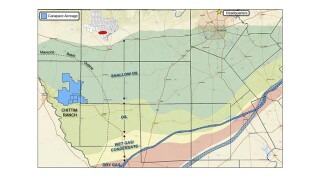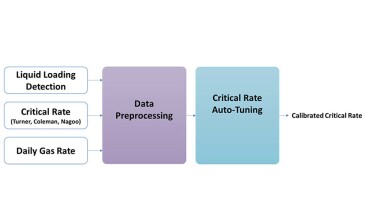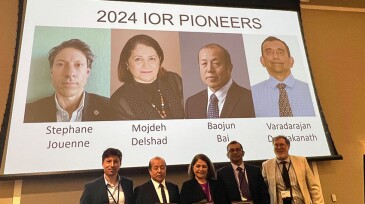Enhanced recovery
The objective of this microfluidic investigation is to identify and test two novel applications for magnetic fluids in porous media for subsurface oilfield applications.
This paper describes a study to design and implement an enhanced oil recovery project via a huff ’n’ puff using Y-grade injectant.
This study compares water-based chemicals that can be used for enhancing the oil recovery of shale-oil reservoirs, including surfactants, nanoparticles, and ketones.
-
This paper presents a multidisciplinary view of the evolution of a development project for the central area of Sururu and the method applied to address challenges and propose solutions.
-
This paper presents a clear and consistent method for determining dead and live crude EACNs using a single reliable method, highlighting a graphical way to determine the optimal salinity and its uncertainties using real data.
-
This paper presents a unique investigation into determining the sufficient concentration of hardness ions required to significantly reduce the adsorption of acrylamide-tertiary-butyl-sulfonate-based polymer with a focus on mitigating polymer retention in carbonate formations using softened brine.
-
India’s state oil company is accepting proposals from potential technical service partners until 15 September for EOR projects in the Arabian Sea.
-
The SPE IOR-EOR Terminology Review Committee has opened a period for public comments on a draft technical report.
-
This paper describes a data-driven approach for liquid-loading detection and prediction that harnesses high-frequency gas-rate and tubinghead-pressure measurements to identify the onset of liquid loading and correct critical rates computed by empirical methods.
-
This paper outlines the importance of numerical rate transient analysis for dry gas wells, describing a simple, fully penetrating planar fracture model.
-
This paper highlights an approach of using active hydrogen to stimulate hard-to-recover formations from candidate-well selection through pilot execution and evaluation.
-
The authors investigate the utility of applying unconventional technology to low- or variably producing carbonate reservoirs to increase estimated ultimate recovery and decrease development-scale variability.
-
The honor recognizes recipients for their lasting and significant contributions in the field of IOR.













